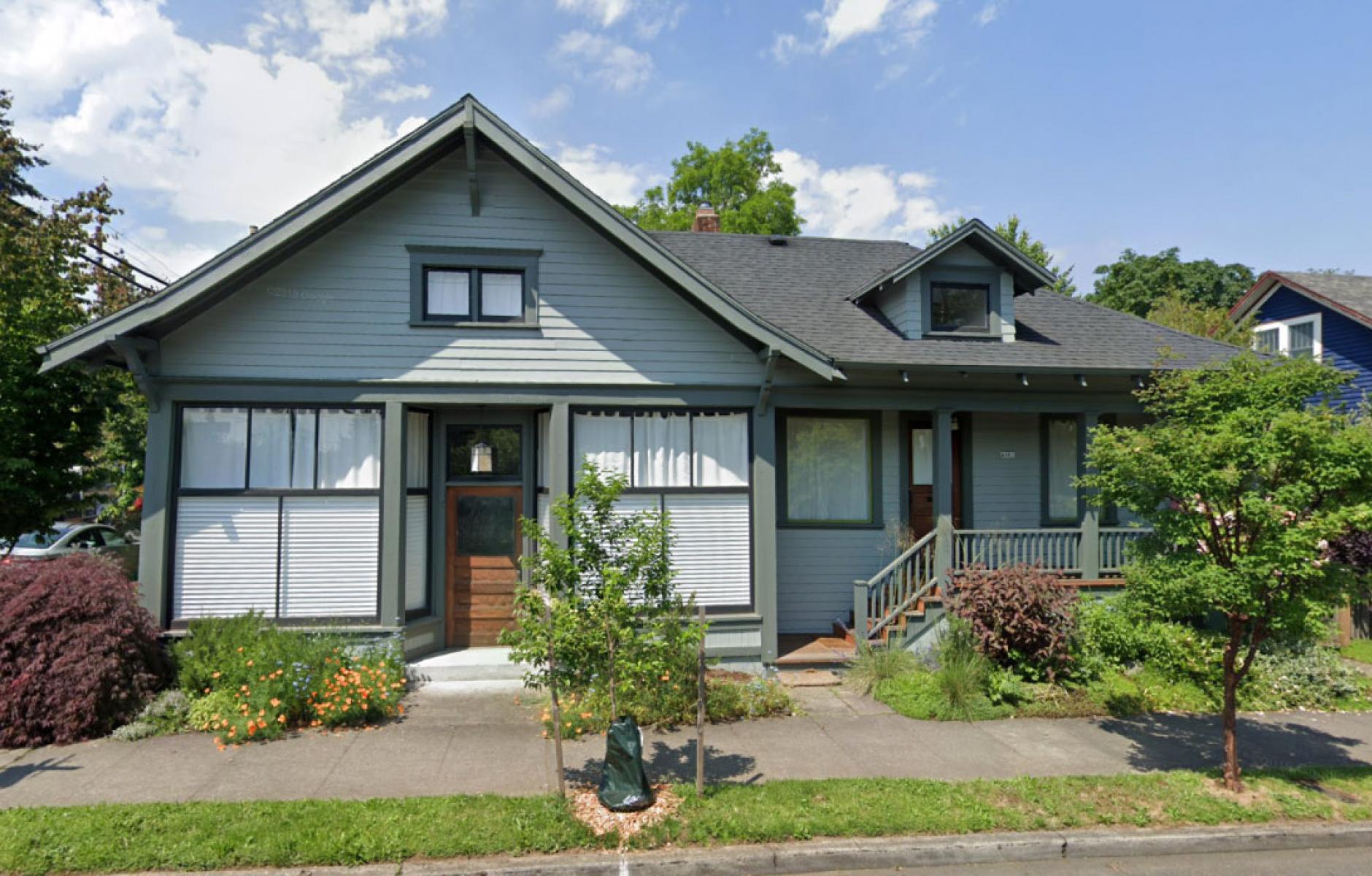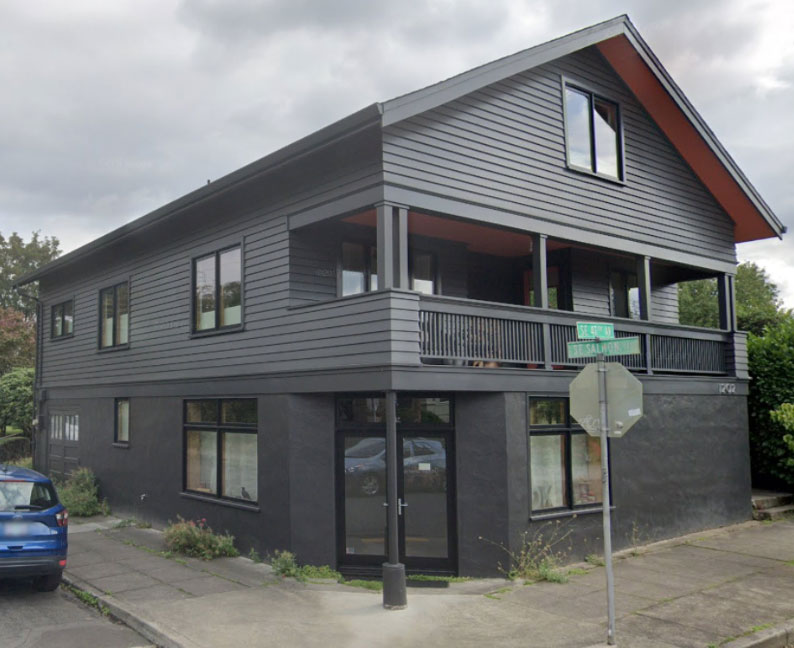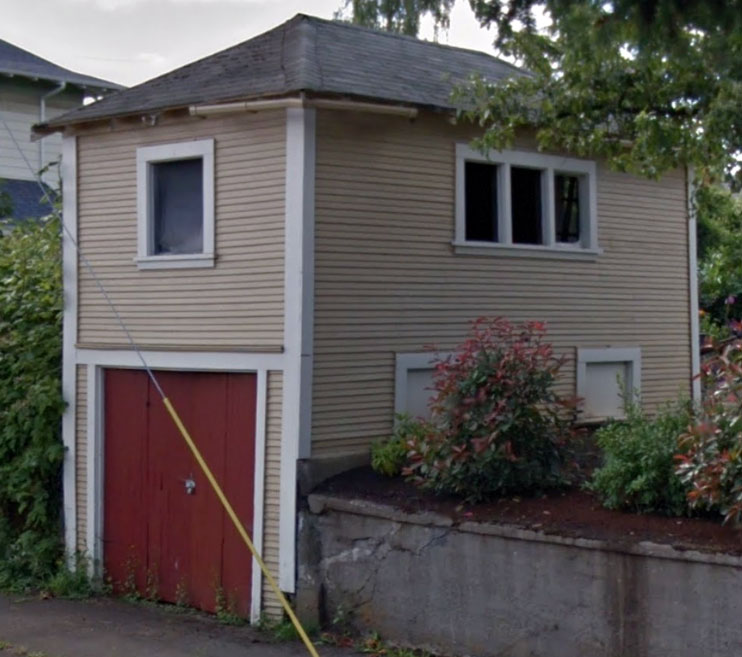
Accessory Commercial Units: Reintroducing retail to neighborhoods
Note: This is the first of a two-part series exploring Accessory Commercial Units, business spaces that attach to residential units, often in largely residential neighborhoods, and how they fit into the toolkit of Incremental Urbanism.
For years in the City of Portland, Oregon, the bicycle network has been built out largely through the use of neighborhood greenways, rather than through the provision of bicycle infrastructure on the main retail streets. Bicyclists wishing to visit those streets to go shopping have to mix with automobile traffic, freight, and buses in order to get to and from their destinations. This has led to a certain amount of frustration within the bicycling community; perhaps born out of exasperation, this has led to calls to allow retail on the neighborhood greenway system, so that bicyclists don’t need to leave the safety of bicycle infrastructure in order to visit a bicycle shop, go to a grocery store, or visit a restaurant, cafe, or pub.
Unfortunately for bicyclists seeking to not get hit by cars while going shopping, Portland’s neighborhood greenway system largely exists within a single-family zoning context, and these zones explicitly ban any sort of retail activities. Given that single-family zoning was born out of a desire to practice racial exclusion through economic segregation, it’s certainly worth re-examining every aspect of this zoning, including its ban on commercial activities beyond home-based businesses that do not receive a significant volume of customers.
There are many existing examples, within the current distribution of single-family zones, of buildings, built prior to the imposition of the current zoning paradigm, that originally included a retail component, whether in the form of ground floor retail with apartments above, or street-facing retail with a residence adjacent. We used to build mixed-use neighborhoods in our cities that freely mixed the retail destinations people need with the residences where they live, in very close proximity. In the racist fever of the 1940s and 1950s to separate white from black populations within cities, however, retail was also deemed to be a blight upon the purity of white-occupied, single-family homes, and segregated to retail-focused zones on the periphery of neighborhoods.

In the same way that accessory dwelling units have been used as the first baby step towards re-introducing multi-family dwelling to single-family neighborhoods, accessory commercial units (ACUs) could be used to re-introduce retail to residential neighborhoods. Whereas accessory dwelling units, at least in Portland, are confined to back yards, attics, basements, and interior areas of houses where it can be more difficult to see the ADU from the street, ACUs depend on being visible from the street for their commercial success. They therefore belong naturally within the front setback, taking over area currently allocated to driveways and front lawns to repurpose it for use as a neighborhood-serving destination that caters to a clientele that arrives primarily by foot or bicycle.
The form of accessory commercial units could be similar to that of accessory dwelling units: a maximum of 800 square feet; either detached from the main home and separated by sufficient fire separation to satisfy the building code, or attached.
Given that a traditional building form found within the front setback is a carriage house, with a residence above a garage on the ground floor, a twist on an accessory commercial unit could see one placed on the ground floor facing the sidewalk, with an accessory dwelling unit on the second floor. This sort of gentle infill could help to build neighborhood intensity without significantly changing neighborhood character, building the local demand for services, such as retail and transit, that do better when there are more customers within a short walking distance.

There are three different potential regulatory paradigms for ACUs worth considering:
- ACUs along bicycle boulevards/greenways everywhere.
- ACUs only at new village center nodes, strategically located to create more 15- to-20-minute neighborhoods by colonizing SFR areas not yet well-served by walkable destinations within walking distance and accessible by separated / family-safe bicycle facilities.
- ACUs everywhere, on any property, for any reason, as long as they face a sidewalk or internal courtyard accessible by ADA-compliant pathway from the sidewalk.
Regulatory paradigm concept 1 would be very true to the intent of the original suggestion, which was if the main streets weren’t going to be made family-bicycle-friendly, then why not allow commercial Main Street activities, in miniature form, on the safe, family-friendly bicycle greenways so that bicyclists at least have the option to choose local retail by bicycle? However, by allowing ACUs on greenways everywhere, there would be little control over where they wound up, and thus potentially greater conflicts with neighbors interested in a strictly residential character for the street they bought into, that sort of thing.
Regulatory paradigm concept 2 could be thought of as the smart growth alternative, as it is focused on helping to achieve a quantitative and qualitative goal of establishing as many 15- to 20-minute neighborhoods within the city as possible, to ensure that the most people have the opportunity to live or work in one. By concentrating ACUs within smaller, more defined areas, this paradigm would minimize the potential of conflict with neighbors. From an equity perspective, however, it would be the least equitable, as the least number of property owners would be able to provide an ACU and therefore benefit from it as a new revenue source to them.
Regulatory paradigm concept 3 could be thought of as the equity alternative, as it is focused on spreading the opportunity to bring additional revenue to a household / property owner from a commercial establishment, without the need to pay to lease or purchase additional, commercially-zoned property to do so. This lowers the barrier to entry to opening a new business, increasing access to the lowest rungs on the economic ladder to those who need it most, especially including populations historically victimized by racism, sexism, and other forms of oppression. This is a very powerful argument in favor of this paradigm. However, it would also by definition allows ACUs on any property, or perhaps it could be limited to any property served by an ADA-compliant sidewalk. Regardless, this would allow the wide distribution of ACUs throughout the city, including in areas where residents will definitely have purchased their properties with a goal of obtaining life in a peaceful, quiet neighborhood that certainly would be free of commercial activities. It is possible that these concerns could be addressed through regulations that use ambient standards to deal with noise, smell, traffic, and other potentially-noxious impacts by addressing impacts rather than by establishing use regulations.
It’s up to each community to engage in dialogue over these three paradigms, and choose the one that resonates most with community members participating in the public process.





